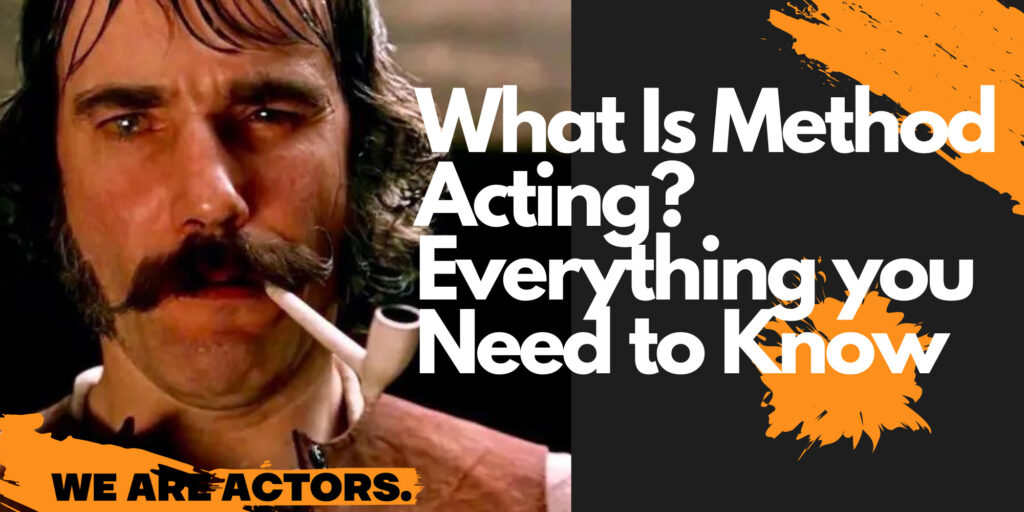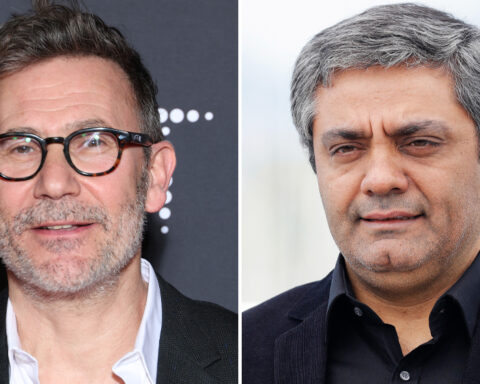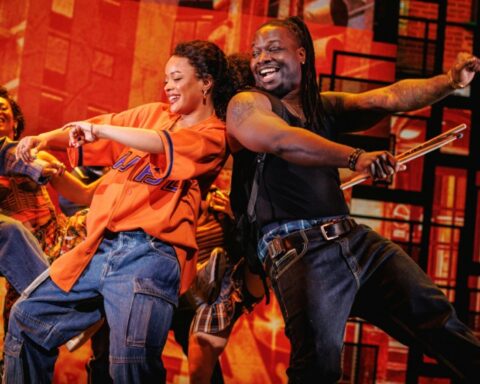
Method acting, often referred to as ‘The Method’, is more than just an acting technique. It’s an intricate system of training and rehearsal practices that advocates for genuine and expressive performances. A method actor doesn’t just play a role; they immerse themselves into the character’s motivations and emotions, creating a sensation of authenticity that grips audiences.
The roots of “The Method” are deeply entwined with the works of a significant figure in the acting world, Konstantin Stanislavski. He laid the foundation for this distinct acting technique and, to fully understand its origins, we must delve into his extraordinary contribution to the theater.
The Role of Konstantin Stanislavski in Shaping Method Acting
Konstantin Stanislavski, a Russian actor and director, can rightly be considered the father of method acting. His system, encapsulated in his landmark books such as ‘An Actor Prepares’ and ‘Building a Character’, formed the bedrock upon which “method” stands today.
In the early 20th century, Stanislavski started organizing his unique acting, preparation, and rehearsal techniques into a systematic methodology, transforming the landscape of acting as we know it. He was driven by a vision: to bridge the gap between dramatic representation and genuine human experience, leading to a more authentic performance on stage.
Stanislavski’s System: The Art of Experiencing
Stanislavski emphasized what he called “the art of experiencing”. Unlike traditional acting, where the actor merely represents the character, Stanislavski’s method involved deeply experiencing the character’s emotions and motivations. This approach allowed the actors to harness their subconscious feelings and justify their character’s actions in the context of the script, bringing depth and realism to their performance.
Stanislavski’s system encouraged actors to analyze the play actively, emphasizing action within the “given circumstances” of the script. This practice was instrumental in moving away from mechanical performances towards more instinctive and dynamic portrayals.
“The Magic If”
Stanislavski introduced a key component to his system, which he referred to as “The Magic If”. This involved actors imagining themselves in hypothetical situations that their characters might face, enabling them to understand and mimic the psychological mechanics of their characters.
A Detailed Definition and Characteristics of The Method
Method acting is an emotion-oriented technique, a style of acting where the actor aims to foster sincere and emotionally expressive performances by fully inhabiting the role of the character. Unlike classical acting, which is primarily action-based, method acting focuses on the depth of emotions, taking acting beyond the surface level.
Introduced by Stanislavski, a Russian actor and theatre director, the method was not initially recognized as “method acting.” However, Stanislavski’s ideas paved the way for a new era, establishing a model that aids actors in crafting believable characters. He proposed that actors draw from personal experiences and memories, striving to genuinely connect with their characters and experience what the character is going through.
Famous Method Actors
Over time, many actors have embraced method acting, delivering performances that remain etched in our memories. These famous method actors include industry stalwarts like Marlon Brando, Heath Ledger, Robert De Niro, and contemporary stars such as Daniel Day-Lewis and Kate Winslet. Each of these actors to use method acting has brought unique depth and authenticity to their roles, forever transforming the landscape of American acting.
Understanding The Process
Method acting is not a casual endeavor. Actors prepare meticulously, fully immersing themselves in the life of the character, often staying in character even when not in front of the camera.
Development of The Method
Method acting was further honed and introduced to American acting studios in the 1930s by Lee Strasberg and Elia Kazan, who added their unique interpretations to Stanislavski’s initial framework. This gave rise to various aspects of the method, such as Strasberg’s focus on the psychological aspects, and Adler and Meisner’s emphasis on sociological and behavioral aspects, respectively.
Method Training and Techniques
Method training involves a series of exercises designed to help actors connect emotionally with their characters. The character acting process involves active analysis, where dramatic situations are improvised, helping actors explore and understand their character’s inner motives and emotions. The techniques used in the method approach are designed to encourage real, genuine emotion and response from the actor, creating a realistic performance.
Psychological Realism
Psychological realism is the backbone of method acting. It focuses on the concept of emotional truth, where actors delve into their own memories and experiences to bring genuine emotions to their roles.
Examples Of Method in Film
- Heath Ledger – The Dark Knight
- Daniel Day Lewis – Gangs Of New York
- Meryl Streep – The Devil Wears Prada
- Adrien Brody – The Pianist
- Jared Leto – Dallas Buyers Club
Method Acting Books
- “An Actor Prepares” by Konstantin Stanislavski: The first in a series of books, Stanislavski details his innovative method of actor training, encouraging sincere and expressive performances. His teachings form the basis of method acting.
- “Meisner on Acting” by Sanford Meisner: This book offers the teachings of Sanford Meisner, who, along with Lee Strasberg and Stella Adler, is considered a defining figure of Method Acting. Meisner focused on the behavioral aspects of the method and promoted the idea of “living truthfully in the moment under imaginary circumstances”.
- “On Method Acting: The Classic Actor’s Guide to the Stanislavsky Technique as Practiced at the Actors Studio” by Edward Dwight: Although reviews on Amazon are mixed, this book has high praise from some users for its clear and simple breakdown of method acting techniques. The Goodreads review also suggests it is a worthwhile book on Method Acting, providing a practical approach to the various techniques followed in the practice.
- A Dream of Passion: The Development of the Method” by Lee Strasberg. The book is considered to be a definitive source on Method acting, a system that Strasberg further developed from the work of Stanislavski. Some of the most renowned actors such as Marlon Brando, Al Pacino, Paul Newman, Dustin Hoffman, Dennis Hopper, Robert DeNiro, Marilyn Monroe, and Joanne Woodward, have trained in Method acting under Lee Strasberg’s guidance.
Frequently Asked Questions
As experts in the field of acting, we understand the nuances of different acting approaches. One of the most popular and revered approaches is method acting. Here are some of the commonly asked questions regarding method acting:
Who is a method actor?
Actors who use “the method” technique are known as method actors or method performers. They use emotional memory to induce certain emotions, feelings, and behaviors that allow them to convey an authentic and believable performance. Notable method actors include Jack Nicholson, Laurence Olivier, Christian Bale, Lee Strasberg, Marlon Brando, Robert De Niro, Dustin Hoffman, and Heath Ledger, to name a few.
What is the Actors Studio?
The Actors Studio is a prestigious acting school located in New York. The school was established by Lee Strasberg, Harold Clurman, and Cheryl Crawford in 1947. It is considered the birthplace of the method acting technique and has trained some of the most acclaimed actors in Hollywood.
What is the connection between Strasberg and method acting?
The Lee Strasberg theatre was one of the most vocal advocates of the method technique. He was a key figure in integrating this technique into the curriculum of the Actors Studio. The Strasberg Method is often used interchangeably with the term ‘method acting.’
Who is Stanislavski and how did he influence method acting?
Stanislavski was a Russian actor, theater director, and acting teacher. He founded the Moscow Art Theatre in 1898 and is widely regarded as one of the pioneers of modern acting theory. Stanislavski’s approach to acting emphasized using affective memory, sense memory, and imagination to create a more authentic and nuanced performance. Method acting’s basic principles are influenced by the works of Stanislavski.
What is the difference between method and classical acting?
Classical acting is a style of acting that emphasizes the delivery of text and dialogue. It depends on the interpretation of the character’s personality and includes a focus on traditional acting techniques like vocal and physical training. Method on the other hand, is an immersive acting technique that emphasizes an actor’s personal experiences and emotions to better portray a character.
What is staying in character, and why is it important?
Staying in character” refers to the practice by an actor of continuing to portray, behave, and think as the character they’re playing, even when they’re not actively performing. This means that the actor assumes the habits, emotions, and mindset of the character for extended periods, sometimes even throughout the entire process of filming or rehearsing. This practice is often associated with “method”, which is a technique where actors fully embody the roles they are playing, emotionally identifying with their characters and not compartmentalizing or faking feelings.







